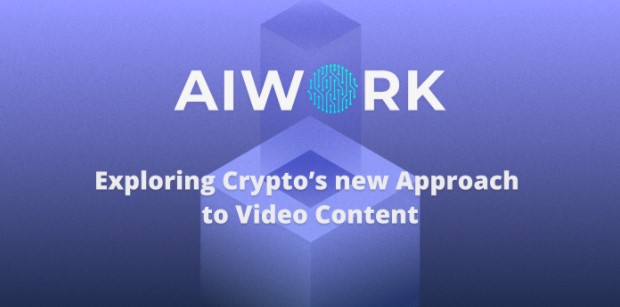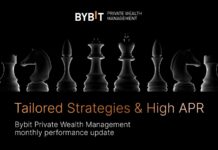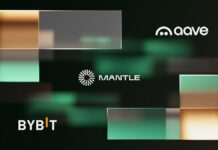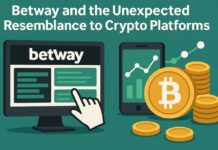
The Internet opened up avenues to realize just how great the potential of video content is. But what exactly do we mean by video content? Any content format that features or includes video.
With the rapid development in the digital age, standard forms and viral platforms for videos have come up, giving content creators more ways to make an extra dollar. These include vlogs, animated GIFs, live videos, customer testimonials, recorded presentations, and webinars. With these new forms of content, consumers would rather watch videos online than live television.
The AIWORK project brings unique approaches to this industry, tackling one major issue — ensuring a continuous flow of normalized and enhanced metadata for video content — through their community of human experts and network of AI.
Analyzing the AIWORK Ecosystem
The project is a blockchain network that facilitates a marketplace of crowdsourced human AI experts to help create, verify, and validate AI data sets to make the AI powering the bulk of metadata creation better at this task. AIWORK’s ecosystem is comprised of five independent parties, namely:
- Requesters
- Computing Resource Providers (nodes running the AI)
- Human Experts (similar to Mechanical Turks)
- Validators
- Software Developers
With these five independent parties, the video content arena can change, enabling more intelligent and mutually beneficial systems. They also help create a merger between the crypto market and content creators.
Requesters
These individuals are responsible for submitting videos to AIWORK to obtain normalized metadata. Requesters pay for the metadata creation in AWO, the native token of AIWORK.
Computing Resource Providers (CRP)
These can simply be referred to as providers. They run the platform’s decentralized, open-source AI software that runs inside an isolated Docker container based on popular Deep Learning frameworks, like Caffe and TensorFlow. These providers can use Convolutional Neural Network for image classification tasks, the current state-of-the-art model architecture.
They can also share the network’s computing resource (CPU/GPU) to run AIWORK’s artificial intelligence (AI) software while generating enhanced metadata, including the platform’s trademark content safety index, ContentGraph.
Users are encouraged to join the project as providers to gain tokens for the tasks performed and the computing resources provided.
Human Experts (HEs)
The project’s secret weapons are running and improving the AI behind the scenes. They perform simple micro-tasks, such as verifying the AI outputs and rovidehuman-AI additional metadata that the AI cannot quickly generate.
AIWORK then feeds the improved datasets back into the AI network, which teaches it to continuously improve the metadata generated by AIWORK, their secret weapon. Like the provider humans, they gain tokens in exchange for well-performed tasks.
Validators
The validators are independent players within the AIWORK ecosystem. They stake a significant amount of AWO to gain the rights to carry out the following tasks as per the platform’s consensus:
- Picking up the chunks of video jobs and distributing them to providers and workers.
- Validation of the results submitted from providers and workers.
- Analyzing and combining the results to produce a single coherent ContentGraph for each video.
They are a critical part of the ecosystem, as they can also mint new blocks on the AIWORK Plasma and gain tokens for their tasks. They manage much of the workflow for the ecosystem, distributing and verifying functions of the parties mentioned above. The project gives them the right to assign rewards to participate CRPs and HEs. If the validators don’t perform their functions by the consensus mechanism, they may lose their staked tokens.
This is a crucial position within the ecosystem. It calls for a keen eye, which is why only a validator can decide the next validator via a pseudo-random algorithm that is independently provable and bias-free.
Software Developers
Developers can build applications that interact with AIWORK and utilize the ContentGraph scores. The two main applications to expect are:
- an open-source search engine and relevant API
- an advertisement matching service and appropriate API.
Developers who join the AIWORK ecosystem can use the platform to create new applications. In addition to this, developers can also access a list of non-private videos processed on the AIWORK platform, with their corresponding ContentGraph, using their metadata.
How This Enables Better Search and Discoverability
AIWORK focuses on decentralization and democratization of online videos, giving control back to internet users. The team believes that too much power ends up in the hands of just a few and is at the mercy of often biased algorithms without decentralization. Currently, video creators are subject to this and struggle to have their content discovered due to the lack of normalized metadata systems. AIWORK is trying to change this by setting up an accessible normalized metadata creation platform and following this up with a decentralized and open-source video search engine.
The five independent parties ensure that the metadata supplied is consistent, complete, and non-subjective. AIWORK has risen above the competition and created its position as an Over the Top (OTT) Video Platform, where content is easily discoverable and searchable by subscribers. Other OTT Platform providers can also take advantage of AIWORK in divergent ways to enhance or add their metadata.
By tackling several issues that video creators and users alike face, AIWORK hopes to revolutionize this space for the benefit of all.
[newsletter_form lists="1"]










